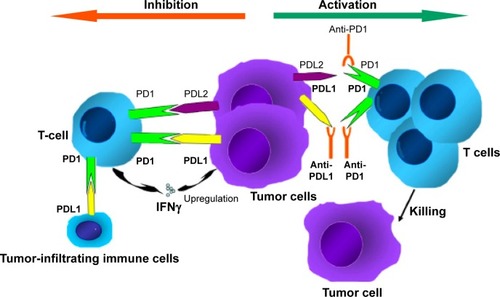Figures & data
Figure 1 Mechanism of anti-PD1 and anti-PDL1 checkpoint blockades.

Table 1 Clinical trials of atezolizumab for urothelial carcinoma
Table 2 Adverse events that warrant permanent discontinuation of atezolizumab treatment
Register now or learn more
Open access
Figure 1 Mechanism of anti-PD1 and anti-PDL1 checkpoint blockades.

Table 1 Clinical trials of atezolizumab for urothelial carcinoma
Table 2 Adverse events that warrant permanent discontinuation of atezolizumab treatment
People also read lists articles that other readers of this article have read.
Recommended articles lists articles that we recommend and is powered by our AI driven recommendation engine.
Cited by lists all citing articles based on Crossref citations.
Articles with the Crossref icon will open in a new tab.